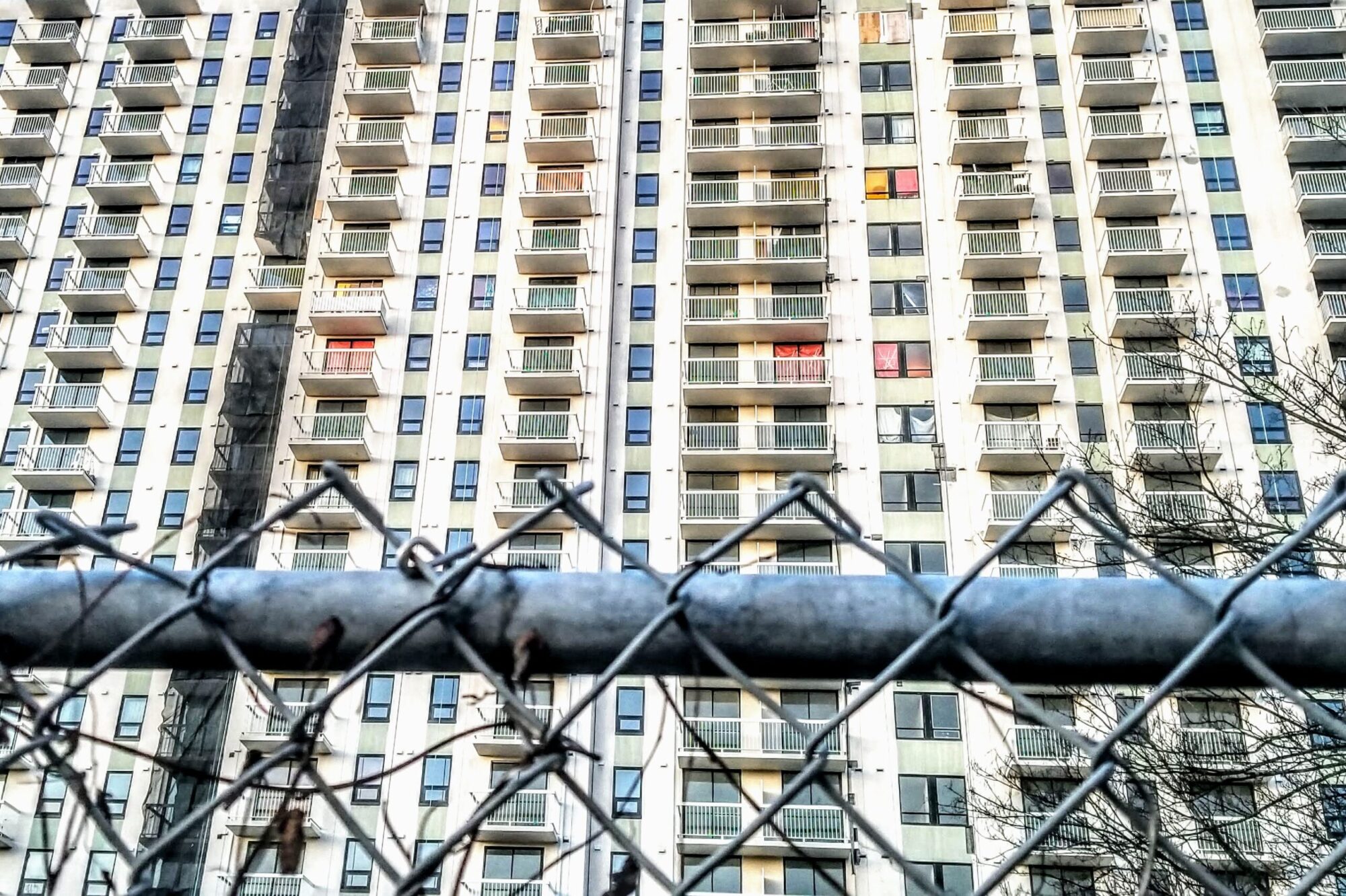1. Visual Analysis
This image captures a modern urban residential high-rise building, framed through the foreground of a chain-link fence. The juxtaposition of the vibrant architecture and the muted, harsh fencing creates a dynamic tension between access and restriction.
- Foreground (Fence):
- The chain-link fence is a prominent foreground element, partially in focus, and acts as a visual and symbolic barrier.
- Its industrial, weathered texture contrasts sharply with the clean, repetitive patterns of the building in the background.
- Background (Building):
- The high-rise building showcases a grid-like pattern of identical balconies and windows, creating a rhythmic, almost monotonous visual flow.
- The variations—such as brightly colored curtains (orange and red) and covered balconies—break the uniformity, hinting at individuality within the collective.
- Composition:
- The frame is divided into two distinct layers: the chain-link fence in the foreground and the building in the background.
- The alignment of the fence and the building creates a feeling of separation and duality. The blurred diagonal of the fence draws the viewer’s eye toward the building, emphasizing depth.
- Lighting and Tone:
- The lighting suggests a cool, late afternoon with muted tones. Shadows add depth, while the few bright pops of color (curtains) draw focus.
2. Symbolic and Reflective Analysis
The photograph communicates themes of containment, isolation, and individuality within a collective system.
- Barriers and Division:
- The chain-link fence symbolizes separation—both physical and metaphorical. It creates a sense of restriction, emphasizing the notion of distance from the residential life depicted in the background.
- The image invites reflection on societal divides: freedom versus confinement, inclusion versus exclusion.
- Individuality within Uniformity:
- The high-rise’s repetitive design suggests conformity, yet the individual choices of curtains, balcony arrangements, and wear hint at personal expression within systemic uniformity.
- This tension mirrors the larger theme of urban life: the coexistence of structure and freedom.
- Urban Narratives:
- The building represents modern urban living—densely packed and structured. The fence adds a contrasting element of industrial ruggedness, perhaps alluding to the barriers many face in accessing such spaces.
3. Practical Photography Insights
This photograph demonstrates effective use of framing, depth, and contrasting elements.
- Framing:
- The chain-link fence acts as a natural frame, adding context and depth to the shot. Its inclusion transforms the composition from a simple architectural study to a narrative piece.
- The positioning of the fence in partial focus allows the viewer to see both the foreground and background as equally important elements.
- Depth and Layering:
- By placing the fence in the foreground and the building in the background, the photographer creates a layered effect, enhancing visual interest and storytelling.
- Contrasts:
- The interplay of soft versus hard textures (fence and building) and monotony versus individuality adds emotional and visual tension.
- Editing:
- The slight desaturation of colors in the building enhances the industrial feel, while the bright colors of certain balconies stand out more vibrantly, creating focal points.
4. Reflections
The image feels like a commentary on urban life: how modern cities can feel like cages, where individuality struggles to emerge within a sea of conformity. The fence, a symbol of separation, turns this residential scene into a statement on accessibility and human connection.

